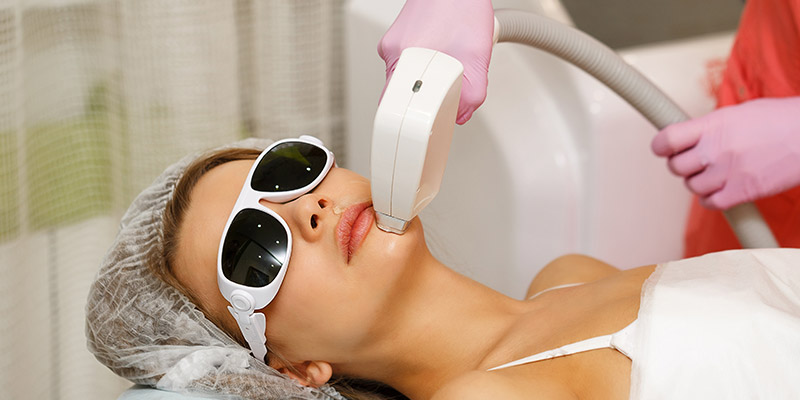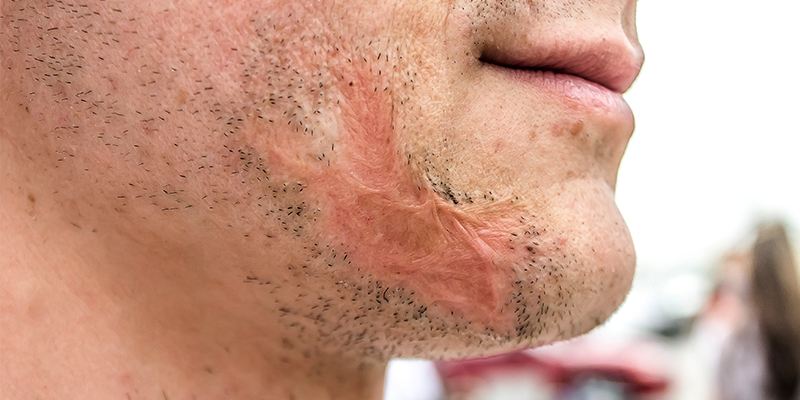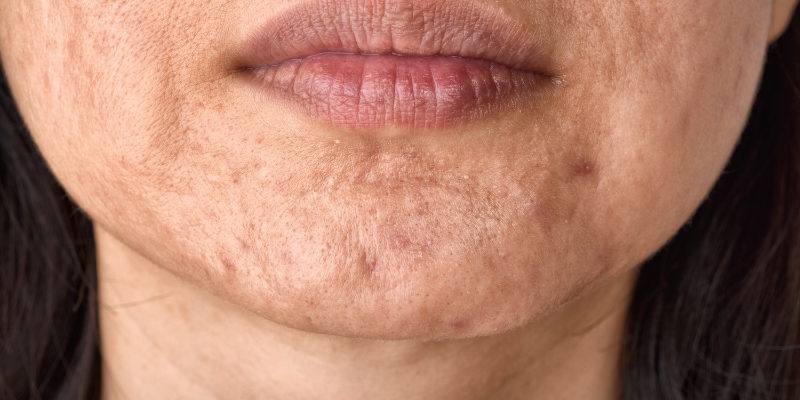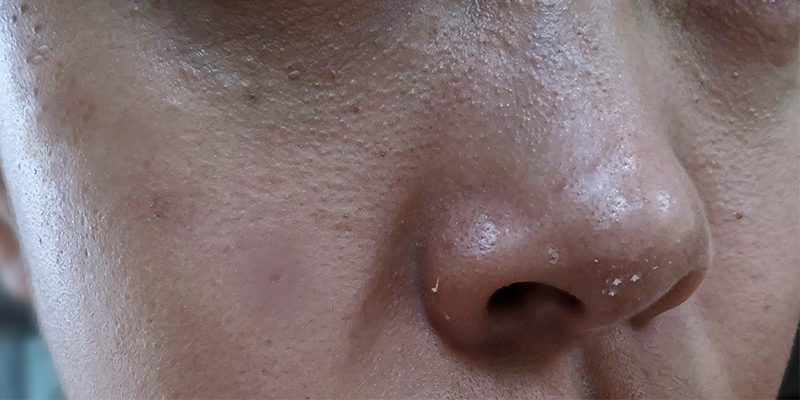Table Of Content
How To Remove White Scars From Face?
Table Of Content

Scars usually fade with time naturally, and their appearance tends to dissolve into the skin. It can be quite challenging for your self-esteem if you have scars on prominent areas of your body especially the face. Old white scars, while not as noticeable as newer and more livid scars, can be disfiguring, especially if they’re on a place on your body that can be easily seen. This article throws light on what white scars are, their causes, and how to remove them.
What Are White Scars On Your Face?
White scars are very common on the face and are typically caused when the body tends to lose its natural pigment melanin in some areas. Its appearances are very prominent and sometimes seem silvery. It is typically around the cheeks and then spreads across the body.
Do White Scars Go Away?
After a lot of research, many dermatologists believe that white scars (especially old white scars) cannot be removed permanently, but some medical treatments can help in marginally dissolving these scars, such as collagen, steroid injections and laser surgeries, that help in resurfacing the skin.
What Causes Of White Scars On Face?
White scars are usually a result of hypopigmentation, which is due to loss of skin colour, as the body produces less of the pigment melanin. In most cases, if our skin cells have a lesser amount of amino acid called tyrosine, then our melanocytes are unable to produce enough melanin, which results in skin discolouration.
Hypopigmented scars are injured skin cells, which turn pigment-less due to their condition. So, in case it is a severe injury that goes deep, then it damages our pigment-producing cells and hinders their ability to produce enough melanin that matches your skin, and thus the skin is unable to restore its original colour.
Why Do Scars Turn White?
Scars are our body’s way of healing our skin, and it acts as a protection from bacteria and germs. The white coloured scars are called hypopigmented scars and are typically a result of surgical procedures, history of traumatic wounds/burns, or deep resurfacing procedures. Hypopigmentation is a condition wherein the skin cells produce an inadequate amount of melanin, and thus causes white patches on our skin.
How Long Does It Take The Scars To Turn White?
The time varies from one person to another, as there are many variables involved, such as the medical history of the person. When a wound brings in more blood flow, it results in heavy collagen scar formation, wherein the development of collagen takes almost six months to two years. Then, the red/purple colour of the scar begins to fade and turns into translucent white.
Different Types Of Hypopigmentation Scars
The different forms of hypopigmented scars are due to the following conditions –
- Vitiligo – This is an autoimmune disease, and is like a technical glitch in the body, wherein the body tends to attack the pigment-producing cells and permanently damages them, causing white patches on all over the body.
- Albinism – This condition is rare and is hereditary. It is a disorder in the body and is typically caused due to the absence of enzymes that are responsible for producing melanin. This results in a lack of pigmentation around the eyes, hair and a few other parts of the skin, and these affected areas appear white in colour. Further, unlike other conditions, this disorder does not have a solution. Hence, it is important to consult a dermatologist to see what action can be taken to reduce the white patches that are caused due to this condition.
- Pigmentation Loss – This condition is a result of skin injury or any kind of trauma to the skin that causes temporary loss of colour in the affected area, hence leaving a white and colourless patch behind. Fortunately, this condition is temporary and can be easily treated.
- Pityriasis Alba – This condition is mostly seen in people with dark skin and can be identified when you observe colourless and scaly patches on the skin. It is also presumed to be a kind of eczema.
- Tinea Versicolor – This is a very common and harmless condition and tends to fade away with time. The areas that are most likely affected are:
- Piebaldism – This is a rare type of genetic disorder that causes a lack of pigmentation in the body in both skin and hair.
White Spots On Skin
White marks are caused due to nutritional deficiency is because of lack in the intake of essential vitamins and minerals. Sometimes, in many cases, these marks appear due to calcium deficiency or vitamin D or vitamin E deficiency. Appearances of these white marks caused due to nutritional deficiency can be seen anywhere in the body, but typically starts with the face and the nails, and this depicts the health of your skin and bone.
Treatment Of White Scars On Face
Hypopigmentation is a difficult condition, but, after thorough consultation from an expert dermatologist, and identifying the root cause, there are some treatments available that bring out a marginal difference.
- Chemical Peels – Chemical peels are the most popular way of getting rid of the scars. In most cases, TCA (trichloroacetic acid) peel is suggested for scars caused by acne, hypopigmentation and hyperpigmentation.
- Laser Skin Resurfacing – Laser resurfacing is what is suggested by most of the dermatologists, as it enables to move pigmented cells to the light-coloured skin. Fractional laser resurfacing is very effective in treating hypopigmented scars and have absolutely no adverse effects.
- Dermabrasion – This process sands the uppermost layer of the skin away, and therefore is a popular treatment for acne scars, hyperpigmentation, and hypopigmentation as well.
- Retin A – Retina-A is a form of Vitamin A and is easily available over the counter. It is known to produce collagen and it mostly works against scars caused by acne, hypopigmentation and post-inflammatory hyperpigmentation.
- Topical Corticosteroids – This solution is easily available over the counter and is popular for treating and lightening hypopigmentation.
It is important to see a dermatologist as soon as you see signs of white marks on your body, because the earlier you start treating them, the sooner you will be able to get rid of them. Sometimes, white marks caused by malnutrition are inoffensive, but they could also indicate an imbalanced diet. Always see your doctor for advice.
Frequently Asked Questions
The areas that are most likely affected are – chest, back, arms, legs. Typically, the commonly affected areas are – around the nose, mouth, eyes, navel, groin.
No! it is never a good idea to do so because firstly the scar tissue is different from the rest of the skin, it is rough and less porous, and secondly, the pigmentation of the two would never match. But, if you still want to consider going for a tattoo to conceal your scar, consult a dermatologist, let them analyse the depth and type of scar, and only after getting consent from your dermatologist, go ahead with your plan.










